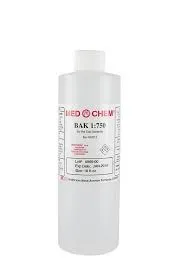Polyaluminium Chloride in Efficient Water Treatment Solutions for Enhanced Purity and Clarity
The Role of Polyaluminium Chloride in Water Treatment
Water treatment is a critical process that ensures the safety and quality of drinking water. One of the most effective coagulants used in water treatment is polyaluminium chloride (PAC), a compound recognized for its efficiency in removing impurities from water. PAC has gained popularity due to its ability to facilitate the coagulation and flocculation processes, which are essential for clarifying water.
Polyaluminium chloride is a chemical compound derived from the reaction of aluminum hydroxide with hydrochloric acid. It typically appears as a white or slightly yellow powder and is soluble in water. When added to water, PAC dissociates into aluminum ions, which then interact with suspended particles, colloids, and other impurities. These interactions lead to the formation of larger aggregates or flocs, which can be easily removed from the water by sedimentation or filtration.
One of the primary advantages of using PAC is its effectiveness across a wide range of pH levels and water temperatures. This versatility makes it suitable for various water sources, including both surface water and groundwater. The use of PAC also results in lower sludge production compared to traditional coagulants like aluminum sulfate, making it an environmentally friendly option. Additionally, the use of PAC yields better turbidity removal and enhances the overall aesthetic quality of water by reducing color and odor.
polyaluminium chloride water treatment

In municipal water treatment facilities, PAC is commonly used in the pre-treatment stages to remove organic matter, pathogens, and other contaminants. Its rapid action allows for the efficient treatment of large volumes of water, which is crucial in meeting the growing demand for potable water. Furthermore, PAC can also be utilized in wastewater treatment processes to aid in the removal of suspended solids and improve effluent quality.
Despite its many benefits, it is essential to monitor the dosage of PAC carefully. Excessive use may lead to residual aluminum in the treated water, which can pose health risks. Therefore, operators must balance effectiveness with safety, ensuring that aluminum levels remain within regulatory limits.
In conclusion, polyaluminium chloride plays a vital role in modern water treatment processes. Its ability to enhance coagulation and flocculation makes it an invaluable tool for ensuring clean and safe drinking water. As the demand for purified water continues to rise, the use of PAC will likely increase, further solidifying its position as a preferred coagulant in the water treatment industry. Maintaining a focus on proper dosage and application will ensure that the benefits of PAC can be realized while safeguarding public health.
-
lk-319-special-scale-and-corrosion-inhibitor-for-steel-plants-advanced-solutions-for-industrial-water-systemsNewsAug.22,2025
-
flocculant-water-treatment-essential-chemical-solutions-for-purification-processesNewsAug.22,2025
-
isothiazolinones-versatile-microbial-control-agents-for-industrial-and-consumer-applicationsNewsAug.22,2025
-
scale-inhibitor-key-solutions-for-water-system-scale-preventionNewsAug.22,2025
-
organophosphonates-versatile-scale-inhibitors-for-industrial-water-systemsNewsAug.22,2025
-
scale-and-corrosion-inhibitor-essential-chemical-solutions-for-water-system-maintenanceNewsAug.22,2025





